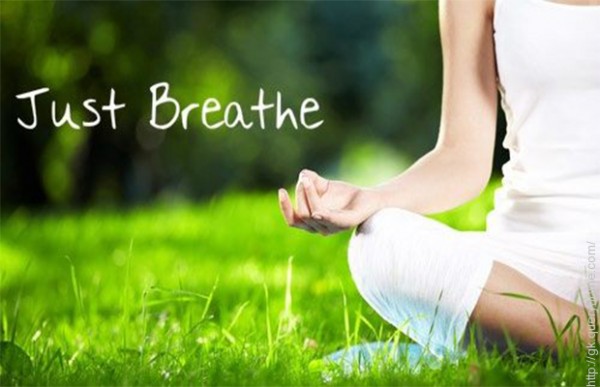Anxiety is a state of mind that everyone experiences from time to time. It’s natural to feel stressed before a performance or an exam, or even during a particularly busy or overstimulating period. However, anxiety itself is more than simply 'stress'. If you notice yourself experiencing anxiety for long periods of time, and you can't seem to kick it, a closer examination of this may be beneficial. The following advice may help reduce your anxiety levels, both in the heat of the moment and on a long-term basis.

1. Be Present

The simple technique of reminding yourself to be present is very powerful and can immediately dissolve worry and anxiety. Easier said than done though, right?! To do this, bring all of your attention into your feet — this will help bring your awareness out of your head and into your body, anchoring you and keeping you grounded. Now feel the sensations in your feet. Feel the blood pumping through your veins. Feel your bones and toes. Whenever your Mean Girl (or Mean Boy) wants to pull you out of the moment, simply let the thought go and bring your attention back to your feet.
You can do this practice as many times throughout the day as you need to. Even better, you can do it no matter where you find yourself — on the loo, at your desk or even on the bus. If you find yourself back in the past or doing some serious future-tripping, just simply bring your attention back to your feet.
2. Breathe Deeply And Fully

When you are anxious, you tend to do short and shallow breathing, which raises your heart rate and contributes to that panicky feeling. When you feel your anxiety rising, put both your hands on your belly. Place your feet flat on the floor. Close your eyes, relax your shoulders and breathe deeply and fully into your belly. Feel your hands rise and fall with your breath. Take 10 deep breaths, and once you’re feeling calm and centered again you can slowly open your eyes. Do this exercise whenever you feel that familiar worried feeling starts to wash over you — the quicker you can do it the better, but it’s never too late.
You can also try this quick and easy, yet powerful mindfulness breathing technique...
Close your eyes.
Breathe in for 5 counts.
Hold your breath for 2 counts.
Breathe out for 5 counts.
Repeat at least 5 times.
Meditate
3. Eat Well

It might sound strange to link your anxiety to what you eat, but the foods you consume have a big impact on your mental health. Studies have shown a correlation between unhealthy eating and high anxiety and stress. If you are anxious, stay away from things like sugar, gluten, dairy, soft drink, candy, coffee and processed junk foods. Instead, add in more grounding and wholesome foods like root vegetables, coconut oil, green leafy vegetables, grass-fed and grass-finished meats. These foods are going to help nourish your body on a cellular level.
4. Get Support

The sooner you get over your belief that you’re a superhero and can do everything on your own, the better. We all need support from time to time and that’s ok. We can not do this thing we call ‘life’ alone. Being a Mum, running a business, being a good wife, cleaning the house, cooking, catching up with your besties, washing the clothes, doing errands and life admin are all a full time job in themselves.
So stand in your power, ask for support when you need it, and don’t be afraid to share how you’re feeling. Commit to having an open and authentic conversation with a friend, your Mum, a holistic therapist… whoever resonates with you.
Sometimes, you’ll find that even just the simple act of voicing your concerns out loud to another person is enough to reduce your anxiety — that worry that felt as big as the Titanic suddenly becomes virtually non-existent.
5. Meditate

It has been scientifically proven that meditation relieves anxiety and calms the nervous systems. With all the chatter and stimulation around us these days, we are more on edge and reactive than ever before. This is why meditation is so imperative — and so potent. I personally have found daily meditation by far the most powerful way to decrease my overall anxiety and stress in my everyday life. It wasn’t until I started meditating twice a day that my anxiety dissipated and my life dramatically changed.
There are many different forms of meditation, such as guided meditations, using a mantra, or focusing on your breath. Try them all and see what resonates with you. Start with 10 minutes in the morning and 10 minutes at night, and then increase your time when it feels right. This will make a dramatic difference to how you feel, your health and how you show up in the world. The goal is to move through your day with ease and grace, and meditation will facilitate that.
6. Move Your Body

Physical activity releases endorphins (the happy hormones) which help increase happiness and reduce cortisol (the stress hormone). As soon as you start to feel the anxiety come on, go for a walk in nature, do some yoga outside or take a dance class etc ... any activity where you are moving your body will help!
Exercise has an immediate effect on your anxiety levels. But even better, regular exercise will decrease the amount of anxiety you feel overall, so make sure you keep at it. Try to move your body every day for an hour if you can.


